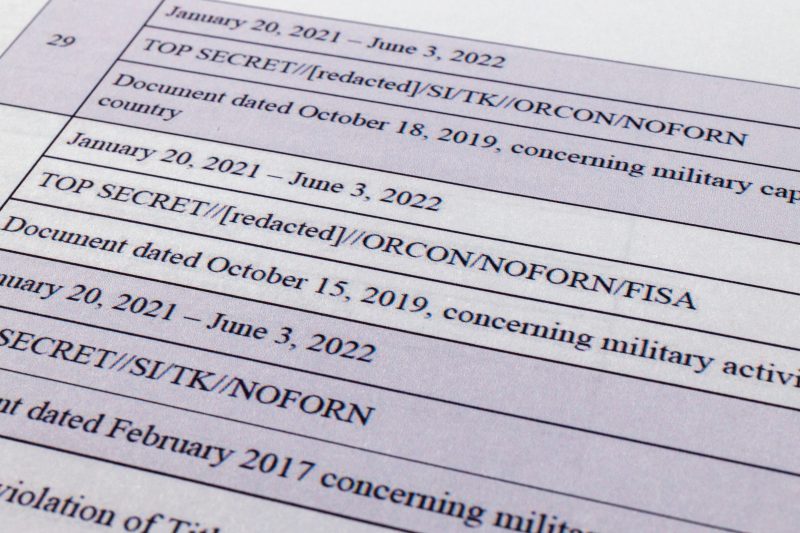Former president Donald Trump is accused of keeping dozens of classified documents in his possession after leaving the White House.
Trump was not charged with a crime for every secret document that the FBI retrieved last year. Instead, the 49-page indictment homes in on a list of 31 documents that the former president kept in his Mar-a-Lago estate in Florida without authorization. For each document, Trump is being charged with one count of willful retention of national defense information.
Most of the documents involved were marked as “SECRET” or “TOP SECRET” — two of the three levels of security clearances. Many were tagged with markings such as “NOFORN,” meaning they cannot be released to foreign nationals; “ORCON,” which, according to the State Department, means the information “may not be disseminated outside of the recipient Department without prior approval”; and “SI,” or special intelligence.
Other documents are described as being sensitive because they should be shared only with “FVEY,” or those part of the Five Eyes alliance of the United States, Britain, Canada, Australia and New Zealand. Some are marked as “TK,” short for “target keyhole,” referring to intelligence gathered by an overhead collection system like a satellite. (For a guide to other acronyms, see this piece from September by our colleague Philip Bump.)
According to the Justice Department, the documents listed for counts 1 through 21 were in Trump’s possession until Aug. 8, 2022. He held on to the rest until June 3, 2022. Some of the documents are so sensitive that the Justice Department redacted their markings when describing them in the indictment.

